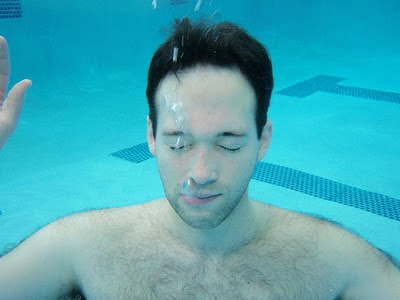1-Portland cements
It is made by burning at high temperature a mixture of chalk and clay in a rotary
kiln. The clinker is ground and gypsum (calcium sulphate) is added to control the
set. British Standard BS 12 limits the amount of sulphur (expressed as SO3) to
3.5%. The fact that Portland cement contains sulphate is important when
investigating the possibility of sulphate attack on concrete or mortar which is
discussed

The addition of water to the cement results in a complex reaction accompanied
by the evolution of heat.
Revised British Standards for cements were published in 1996. The new
designations for Portland cements likely to be used for the construction of swimming
pools and external works are as follows:
Portland cement class 42.5 to BS 12 1996 (CEM 1);
Portland cement class 52.5 to BS 12 1996;
Portland cement class 42.5R to BS 12 1996;
Sulphate-resisting Portland cement class 42.5 to BS 4027 1996;
Portland Masonry cement to BS 5224 1995, ENV 413.1.
The letter R denotes high early strength.
The revisions were mainly concerned with methods of test and terminology
and were intended to agree with the European Standard for cement, ENV 197–1.
Minor changes in composition were also introduced.
The principal characteristics of Portland cement are:
1. A very fine powder, particle size 1–50 microns (1 micron equals 0.0001 mm).
2. The paste (cement and water) is highly alkaline, having a pH of about 13.5.
The high alkalinity is relevant to the protection of steel reinforcement, and
also to the occurrence of alkali-aggregate reaction. The interaction betweenalkalis
in the cement and certain types of silicious aggregates is discussed
3. The setting time (initial and final) is in the range of 45 minutes to 10 hours.
4. The compounds which are principally responsible for the cementing action of
the cement paste are mainly the calcium silicates (the C2S and the C3S).
5. It is the hydration products of the cement which, other things being equal,
determine the strength of the concrete/mortar. The hydration products are very
complex chemical compounds. The principal compounds are calcium silicate
gel, calcium hydroxide (about 20%) and tricalcium aluminate hydrate. The
calcium hydroxide (Ca(OH)2) is liberated by the hydrolysis of the calcium
silicates. The various hydration products hydrate at different rates, but the
hydration is rapid to start with and then slows down.
6. The three major factors which influence the rate of gain of strength are the
chemical composition, the fineness, and the temperature of the hydrating mix.
With modern cements, the increase in strength after the first 28 days is likely
to be very small and can generally be ignored.
7. The amount of water in the mix (usually referred to as the water/cement ratio,
w/c) is a vital factor in determining the strength, permeability, absorption and
durability of the concrete/mortar. Generally, other factors being equal, the
higher the water/cement ratio the lower the strength and the higher the
permeability and absorption. This is why it is often necessary to use a plasticizer
in the mix when high quality concrete is required.
8. Due to its high alkalinity, Portland cement is very vulnerable to attack by
acids. The reaction between the cement and the acid takes place immediately
the two are in contact.




